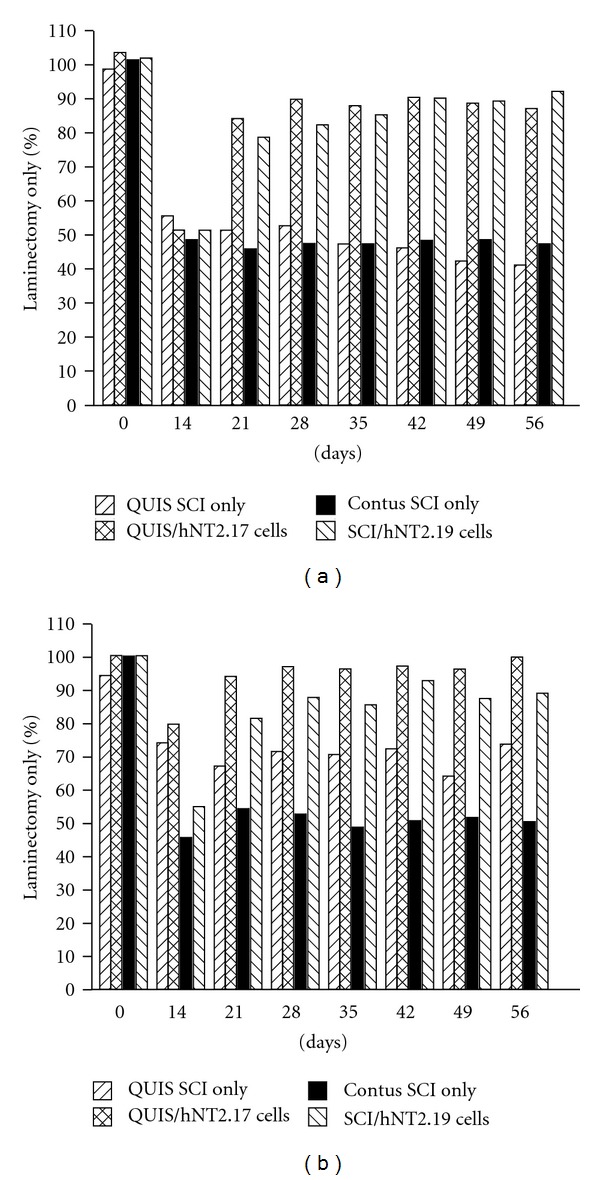Figure 8.

Percent comparison of sensory behaviors after QUIS SCI or severe contusive SCI and with transplant of hNT2.17 or hNT2.19 cells in vivo—type of hNT2-derived cell graft. Rats were either injured with QUIS injection SCI or with a weight-drop device (NYU impactor, 25 mm; severe contusive SCI) in rat models of SCI and chronic behavioral hypersensitivity. All animals in the study received CsA (10 mg/Kg) 1 day before and for 13 days after the two week time-point (14 days) when some animals were injected with hNT2.17 (QUIS model) or hNT2.19 cells (severe contusion SCI). Animals either received one of the SCIs alone, laminectomy alone, or one of the SCIs plus hNT2.17 or hNT2.19 cells (106 cells/injection) into the subarachnoid space at two weeks after SCI. Animals were tested before the SCI (baseline), and once a week following SCI and treatments for hypersensitivity to tactile (a) or thermal (b) stimuli in hindpaws below the SCI. Data are the mean of percent of laminectomy control data in each model, where SCI injury alone negatively affected hindpaw responses and laminectomy alone had no effect. Data represent the mean value (n = 4–9 animals in each group) at each time point before and 56 days after SCI. In these different models, the hNT2.17 and hNT2.19 and cell grafts potently and comparably attenuated tactile allodynia (a) and thermal hyperalgesia (b) induced by either SCI. Recovery of normal behaviors was near-complete by experiment's end with graft of either hNT2.17 or hNT2.19 cells.
